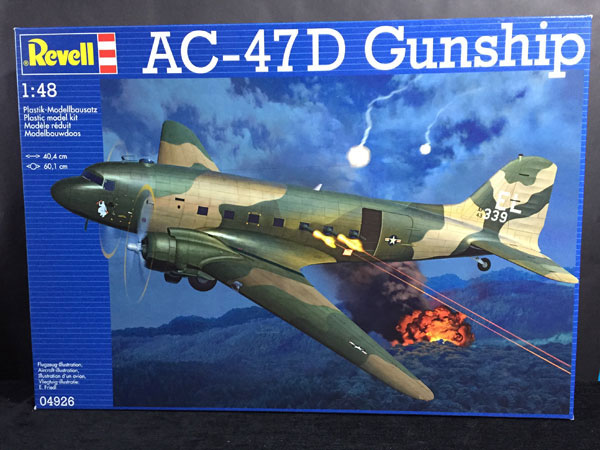
Feature Article by Philipp Kamp
A note from geoff…
When I came across Philipp’s excellent build of the Reveal AC-47D “Spooky” gunship it reminded me of a similar project I had planned many years ago and for various reasons it dropped off the radar. And now here you have Philipp’s impressive build – he’s done an incredible amount of work to the Revell/Monogram kit and the end result is spot-on – congratulations Philipp :)
I hope that we can bring you other builds from Philipp whenever this may be possible and so I hope, in the meantime, you enjoy this one as much as I do every time I look at it :)
Here are a couple of photos of Philipp’s completed AC-47D…
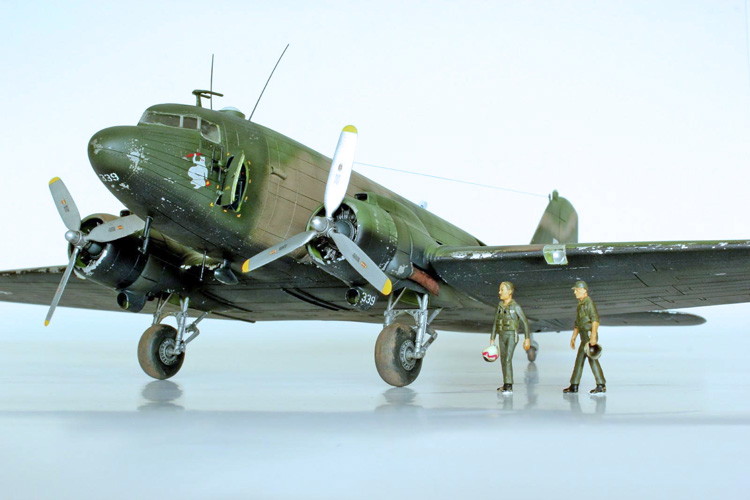
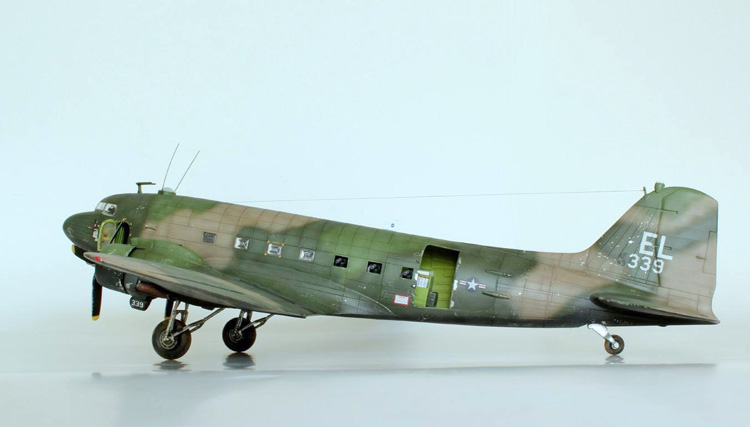
There’s a also a full in-box review of the Revell AC-47D “Spooky” 1:48 in your Aircraft-Here Now area in SMN.
Just before I hand over to Philipp to take us through his build, here’s a little bit of background to the AC-47D “Spooky” Gunships that operated during the Vietnam War.
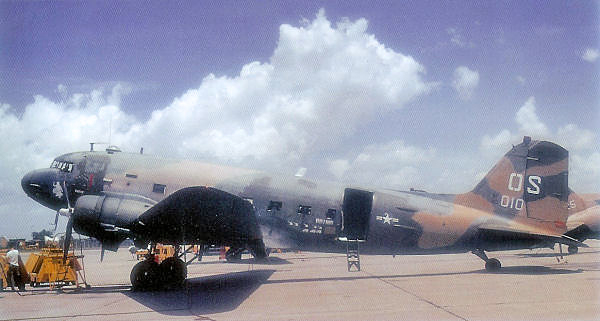
The Douglas AC-47 Spooky (also nicknamed “Puff, the Magic Dragon”) was the first in a series of gunships developed by the United States Air Force during the Vietnam War. It was designed to provide more firepower than light and medium ground-attack aircraft in certain situations when ground forces called for close air support.
The AC-47 was a United States Air Force C-47, (the military version of the DC-3) that had been modified by mounting three 7.62 mm General Electric mini-guns to fire through two rear window openings and the side cargo door, all on the left (pilot’s) side of the aircraft, and the modified craft’s primary function was close air support for ground troops. Other armament configurations could also be found on similar C-47-based aircraft around the world. The guns were actuated by a control on the pilot’s yoke whereby he could control the guns either individually or together, although gunners were also among the crew to assist with gun failures and similar issues. It could orbit the target for hours, providing suppressing fire over an elliptical area approximately 52 yd (47.5 m) in diameter, placing a round every 2.4 yd (2.2 m) during a three-second burst. The aircraft also carried flares it could drop to illuminate the battleground.
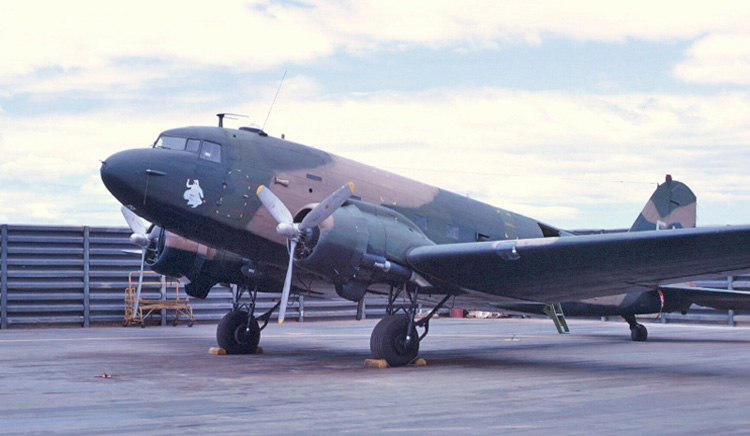
The AC-47 had no previous design to gauge how successful it would be because it was the first of its kind. The USAF found itself in a precarious situation when requests for additional gunships began to come in because it simply lacked mini-guns to fit additional aircraft after the first two conversions. The next four aircraft were equipped with 10 20mm AN/M2 machine guns. These weapons, using World War II and Korean War ammunition stocks, were quickly discovered to jam easily, produce large amounts of gases from firing, and, even in 10-gun groups, only provide the density of fire of a single mini-gun. All four of these aircraft were retrofitted to the standard armament configuration when additional mini-guns arrived.
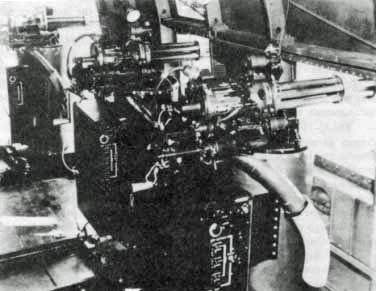
A picture of the three MXU-470/A mini-gun modules fitted to an AC-47D from the following source: Ballard, Jack S. Development and Employment of Fixed-Wing Gunships, 1962-1972 Washington, DC: Office of Air Force History, United States Air Force, 1982. p.10
The AC-47 initially used SUU-11/A gun pods that were installed on locally fabricated mounts for the gunship application. Emerson Electric eventually developed the MXU-470/A to replace the gun pods, which were also used on later gunships.

Over to you Philipp